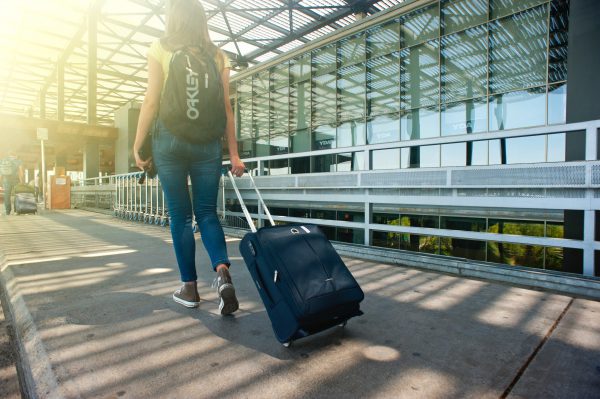HONG KONG, 20 December 2019: Happy travellers are more likely to spend their hard-earned money at the airport, according to new research from Collinson.
The international findings show that in order to increase passenger dwell time and spend, airports and their ecosystem of travel-related businesses and brands must make traveller satisfaction – across the entire journey – a paramount concern.
Collinson’s ‘Airport Journey’ global report surveyed 6,667 people across 11 countries in the Americas, EMEA, and APAC to track evolving traveller preferences and behaviours and learn more about travellers’ satisfaction with the airport experience.

The research found that overall, traveller satisfaction with the airport experience is on the rise. In 2019, 63% of global travellers say they enjoy the airport experience, a jump of 13 percentage points from 2018 when only 50% of travellers said the same*. However, there is a significant gulf between traveller satisfaction in Asia and the Middle East, compared to the US and Europe. On average, three in four travellers (74%) across markets like India, China and the UAE enjoy the airport experience, compared to less than half (48%) across markets like the US, the UK and Germany.
The polarisation in airport experience should concern airports and their ecosystem of businesses because the research also found that happy travellers spend more. Nearly nine in 10 (88%) travellers who routinely spend over US$200 at the airport say the airport experience is an enjoyable part of the journey. On the other hand, the least satisfied travellers are also the ones who spend less than US$28, amongst whom only 40% say they enjoy the airport experience.
Collinson corporate strategy officer, Mignon Buckingham said: “The staggering differences in satisfaction rates in Asia and the Middle East compared to Europe and the US point to a variety of conclusions. Asia and the Middle East are leading international tourism growth, with arrival numbers growing by 6% and 8% from January to June 2019, respectively”. (1)
This boom in tourism arrivals and the regions’ growing middle class are major motivations for the development of new airports and the evolution of existing ones. Without the long-standing legacy infrastructure that other regions must contend with, airports in Asia and the Middle East can build ultra-modern facilities, cherry-pick best-of-breed features, and keep the customer experience absolutely central to it all. These are no doubt contributing factors to travellers’ strong enjoyment of the airport experience in these regions.”
The Asia Pacific has been called the busiest regions for airport development, accounting for 48.5% of global spend on airport upgrades and 57% of investment in new airports (2). Starting from scratch in very recent years means airports in Asia and the Middle East can leverage innovative design and offer seamless technology and services to passengers, as seen in some of the world’s top airports like Singapore Changi, Incheon International and Dubai International. On the other hand, airports in the US and Europe must contend with how to update long-standing facilities to accommodate booming passenger numbers. Europe and the US are home to the world’s 10 oldest airports (3) while the average US airport is over 40 years old (4).
New Opportunities
Collinson’s ‘Airport Journey’ research indicates many key opportunities for airports and other businesses to enhance traveller satisfaction and encourage engagement and spend. Travellers want more opportunities to take control and create a smooth, enjoyable trip even before the journey begins, with nearly three in four (70%) saying they would consider pre-ordering food and beverage if the option was available. For example, DFW Airport in Texas is one of the US’s oldest airports at 45 years old, yet still delivers pioneering digital-led experiences including food pre-ordering through a partnership with Grab. Priority Pass (owned by Collinson) is also partnered with Grab, enabling retail customers to pre-order via the Priority Pass app.
More than half (53%) of travellers who spend upwards of US$150 on retail say they do not spend more because of baggage restrictions, and 39% would spend more if a delivery or collection service was offered. The travel retail app Inflyter is currently working to connect airports and duty-free providers to deliver services which will allow travellers to pre-order and collect duty-free purchases on their inbound journey or have them delivered to an airport lounge.
Travellers relevant communications
Another key finding from Collinson’s ‘Airport Journey’ research is that there is considerable opportunity for airports to improve their traveller relationships via communications. Nearly one in two travellers (45%) receive communications at times when they are not planning to travel; indicating a lack of relevance and personalisation, not to mention wasted marketing spend for airport businesses and brands. An explanation for this may be that, in the absence of a structured loyalty or engagement programme, many airports have no means of knowing when customers will be travelling. Still, 48% of travellers say they receive communications that encourage them to spend more time at the airport, and another 46% say receiving discounts ahead of travel encourages them to shop and dine at the airport. Both points reveal that travellers are in fact open to receiving marketing-driven communications from the airport, if these are relevant and tailored.
Mignon concluded: “Traveller satisfaction with airports is improving, but there is still a significant gap between travellers’ ideal experience and what airports deliver. Our research shows a number of opportunities where all of us in the travel experience landscape can help to give travellers a little more luxury, comfort and peace of mind right across their journey.
“For example, when we know who the traveller is, we can make their experience smoother via inbound or in-lounge duty-free collection services or the ability to pre-order airport meals. Travellers can be also incentivised with card and payment-linked offers that are personalised and relevant.”
*Collinson’s 2019 data draws on five additional markets not included in the 2018 data; with markets held constant, a jump of eight percentage points YoY was recorded.
1 UNWTO World Tourism Barometer, 2019
2 http://www.airport-world.com/features/airport-design/6970-asia-s-big-build.html
3 https://www.airport-technology.com/features/featurethe-worlds-10-oldest-airports-4177034/






